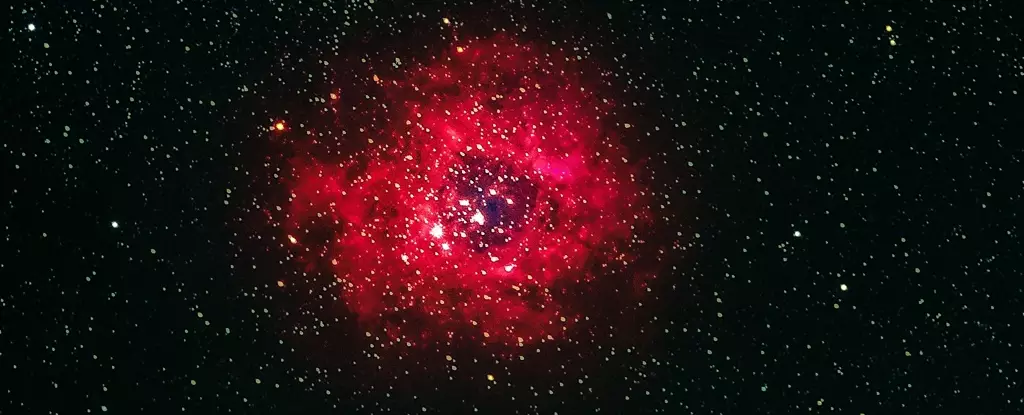In recent years, there has been a growing fascination with unidentified flying objects (UFOs) and the possibility of extraterrestrial life. With the release of the Pentagon’s 2021 report on unidentified aerial phenomena (UAP), the interest in UFOs has reached new heights. Now, in 2023, NASA and the Pentagon have taken steps to investigate these phenomena more thoroughly. This article delves into the search for alien probes near Earth and the potential implications of such discoveries.
Within the vast expanse of the Milky Way galaxy, there are approximately 40 billion Earth-sized planets that could potentially support life. This realization, coupled with human advancements in space exploration, sparks curiosity about the existence of alien civilizations and their ability to send probes to our Solar System. The Breakthrough Starshot program, for example, aims to reach the nearby star Alpha Centauri within a few decades through innovative propulsion methods.
It is important to consider the limitations of our current understanding of physics and engineering when contemplating the existence of alien probes. Humanity is a youthful civilization, continuously expanding its knowledge and pushing boundaries. It should not be difficult to envision that a civilization much older than ours has acquired a deeper understanding of the laws of physics and developed advanced engineering techniques. The possibility of highly evolved civilizations capable of creating and dispatching probes throughout our galaxy becomes tantalizingly feasible.
An Enigma Requiring Better Evidence
While recent footage and reports from the US Navy and government have piqued public interest, the scientific community calls for more substantial evidence in the search for extraterrestrial probes. Conducting thorough investigations and gathering high-quality data are crucial steps in unraveling the mysteries behind these unidentified phenomena. Astronomers are eager for more conclusive proof that can be obtained through analyzing potential wreckage or crashed UFOs. Advanced techniques would be needed to examine these materials for exotic or distinctly different manufacturing characteristics.
Challenges in the Search
Locating and obtaining remnants of potential alien probes present significant challenges. Rumors suggest that private companies possess these exotic samples, which adds complexity to scientific investigations. However, newly proposed legislation in the United States aims to mandate the surrender of all artificial materials from non-human intelligence to the government, potentially providing a solution to this problem.
One method employed in the search for extraterrestrial probes involves looking for short light flashes in the night sky. These flashes occur when highly reflective surfaces, such as mirrors or glass, reflect sunlight. They can also result from artificial objects emitting their own internal light. Observing repeating flashes along a straight line suggests that the object is tumbling in space during its orbit around the Earth. Satellites often display such repeating light flashes, contributing to the complexity of the search.
Helpful insights in the search for alien probes can be gleaned from historical records and photographic evidence. Pre-Sputnik 1 photographic plates reveal the presence of transient light sources that defy astronomical explanations. Interestingly, some of these transients display alignment, mirroring the behavior of short flashes from moving objects. An image from July 19, 1952, shows three bright stars that were never seen again, raising intriguing questions about their nature.
The ExoProbe Project
The ExoProbe project represents a modern initiative to find potential alien objects through the detection of short light flashes. Multiple telescopes are employed to verify the authenticity of each flash, with the aim of measuring parallax and calculating the distance to the object. By utilizing real-time spectra and analyzing objects in a wide field, the project can filter out flashes caused by space debris and satellites. The increase in the number of telescopes further enhances the accuracy of measuring parallax and pinpointing the three-dimensional location of the object.
A Change in Focus
After decades of searching for extraterrestrial civilizations using radio frequencies, no conclusive candidates have been identified. With this realization, it is time to shift our attention closer to home and explore the possibility of alien probes near Earth. Regardless of the outcomes, this ongoing journey is a testament to our insatiable curiosity and our innate desire to uncover the mysteries of the universe.
The search for alien probes near Earth is an exciting and multifaceted pursuit. With the Pentagon’s recent revelations, scientific investigations are gaining momentum, and organizations like NASA are devoting resources to explore the possibility further. While the search may be challenging, the potential discoveries of extraterrestrial technology and civilizations could reshape our understanding of the universe and our place within it. Whether or not we find evidence of alien probes, this journey serves as a reminder of humanity’s unyielding curiosity and our relentless quest for knowledge.


Leave a Reply